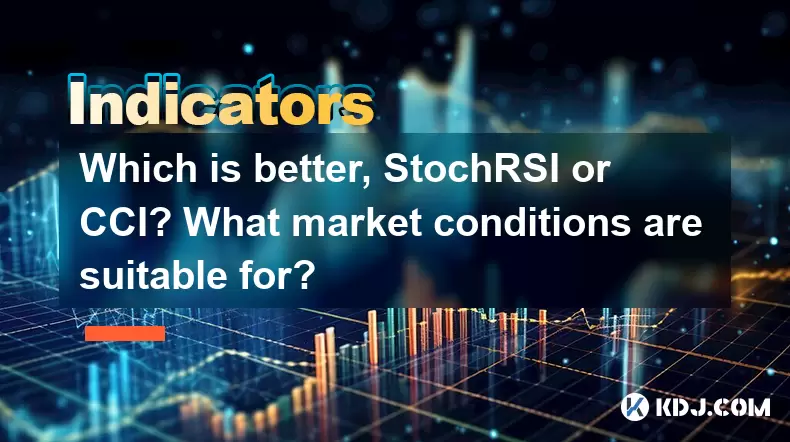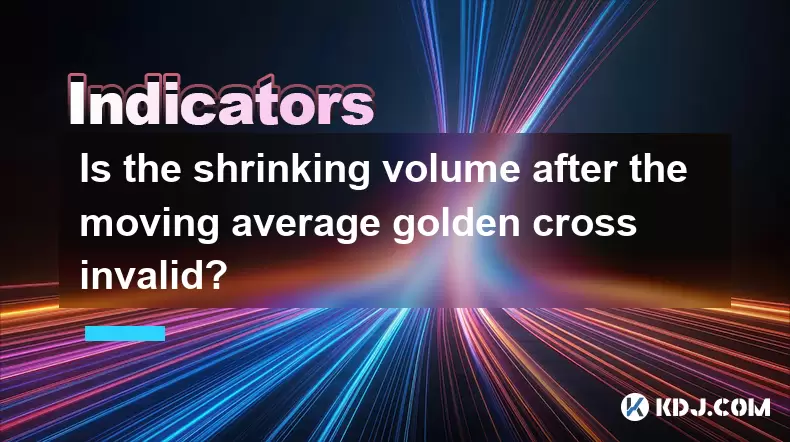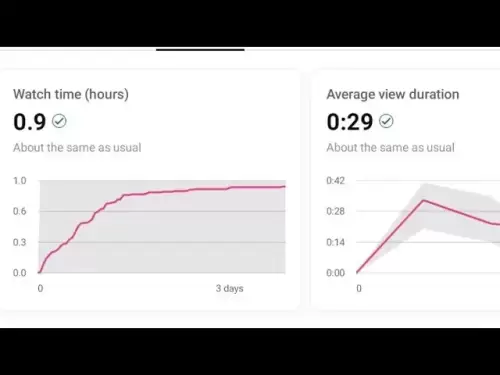-
 Bitcoin
Bitcoin $103,456.1111
0.49% -
 Ethereum
Ethereum $2,414.9631
0.02% -
 Tether USDt
Tether USDt $1.0006
0.05% -
 XRP
XRP $2.1083
0.24% -
 BNB
BNB $634.8760
-0.76% -
 Solana
Solana $139.8437
1.94% -
 USDC
USDC $0.9998
-0.01% -
 TRON
TRON $0.2737
0.97% -
 Dogecoin
Dogecoin $0.1602
0.20% -
 Cardano
Cardano $0.5737
1.08% -
 Hyperliquid
Hyperliquid $32.9779
-2.54% -
 Bitcoin Cash
Bitcoin Cash $474.8886
-1.80% -
 Sui
Sui $2.6272
-1.99% -
 Chainlink
Chainlink $12.4878
0.14% -
 UNUS SED LEO
UNUS SED LEO $8.9234
0.35% -
 Stellar
Stellar $0.2411
-0.18% -
 Avalanche
Avalanche $17.0274
-0.70% -
 Toncoin
Toncoin $2.8936
-1.11% -
 Shiba Inu
Shiba Inu $0.0...01112
-0.58% -
 Litecoin
Litecoin $82.6982
1.33% -
 Hedera
Hedera $0.1423
-0.05% -
 Monero
Monero $314.8455
3.26% -
 Ethena USDe
Ethena USDe $1.0006
0.01% -
 Polkadot
Polkadot $3.4043
1.14% -
 Dai
Dai $0.9999
0.01% -
 Bitget Token
Bitget Token $4.2848
-0.13% -
 Uniswap
Uniswap $6.8748
-5.45% -
 Pepe
Pepe $0.0...09661
0.52% -
 Pi
Pi $0.5359
1.19% -
 Aave
Aave $242.9168
-1.03%
Which is better, StochRSI or CCI? What market conditions are suitable for?
StochRSI, derived from RSI, is sensitive and ideal for volatile markets, while CCI identifies trends in ranging markets, both useful for crypto trading strategies.
May 27, 2025 at 08:56 pm

The debate between StochRSI and CCI (Commodity Channel Index) is a common one among cryptocurrency traders looking to optimize their trading strategies. Both indicators are used to identify overbought and oversold conditions in the market, but they do so in different ways. In this article, we will explore the specifics of each indicator, their strengths and weaknesses, and the market conditions in which they perform best.
Understanding StochRSI
StochRSI, or Stochastic RSI, is a technical indicator derived from the RSI (Relative Strength Index). It is designed to provide a more sensitive measure of market conditions than the standard RSI. The StochRSI is calculated by applying the stochastic oscillator formula to the RSI values, resulting in a value that oscillates between 0 and 1.
The primary purpose of the StochRSI is to identify overbought and oversold conditions. When the StochRSI value is above 0.8, the market is considered overbought, and when it is below 0.2, it is considered oversold. Traders often look for these levels to make buy or sell decisions. The StochRSI can also generate signals when it crosses above or below its moving average, indicating potential trend changes.
Understanding CCI
CCI, or Commodity Channel Index, is another popular technical indicator used to identify cyclical trends in the market. Developed by Donald Lambert, the CCI measures the difference between the current price and its average price, normalized by the mean deviation. The CCI typically oscillates between -100 and +100, with values above +100 indicating overbought conditions and values below -100 indicating oversold conditions.
The CCI is versatile and can be used across various time frames. Traders often use the CCI to identify potential trend reversals when the indicator moves from overbought to oversold levels or vice versa. Additionally, the CCI can be used to confirm the strength of a trend by observing how far the indicator deviates from the zero line.
Comparing StochRSI and CCI
Both StochRSI and CCI are momentum oscillators, but they differ in their calculation and sensitivity. The StochRSI is more sensitive and can generate signals more frequently due to its application of the stochastic oscillator to the RSI. This makes it suitable for traders looking for quick entries and exits. On the other hand, the CCI is less sensitive and may be better suited for identifying longer-term trends.
In terms of signal generation, the StochRSI can produce more false signals due to its higher sensitivity. Traders using the StochRSI need to be cautious and use additional confirmation indicators to validate their trades. The CCI, being less sensitive, may generate fewer false signals but might also miss out on some short-term trading opportunities.
Market Conditions Suitable for StochRSI
The StochRSI is particularly effective in volatile and trending markets. Its sensitivity allows it to capture short-term price movements, making it ideal for traders who engage in scalping or day trading. In a trending market, the StochRSI can help identify potential entry and exit points as the market oscillates within the trend.
For example, in a bullish trend, traders can use the StochRSI to buy when the indicator moves from oversold levels back towards the overbought zone. Conversely, in a bearish trend, selling opportunities can be identified when the StochRSI moves from overbought levels back towards the oversold zone.
Market Conditions Suitable for CCI
The CCI performs well in ranging and trending markets. Its ability to identify cyclical trends makes it useful in markets that are moving within a defined range. In a ranging market, the CCI can help traders identify potential reversal points by signaling overbought and oversold conditions.
In a trending market, the CCI can confirm the strength of the trend by showing how far the indicator deviates from the zero line. A strong trend will push the CCI well above +100 or below -100, indicating sustained momentum. Traders can use these signals to stay in trades longer, capturing more significant price movements.
Using StochRSI and CCI Together
Many traders find value in using both the StochRSI and CCI in their trading strategies. Combining these indicators can provide a more comprehensive view of market conditions and help filter out false signals. For instance, a trader might use the StochRSI to identify short-term entry and exit points while using the CCI to confirm the overall trend.
Here’s how you can use both indicators together:
- Identify a trend using the CCI: Look for the CCI to move above +100 in a bullish trend or below -100 in a bearish trend.
- Use the StochRSI for entry and exit points: Within the identified trend, look for the StochRSI to move from oversold to overbought levels in a bullish trend, or from overbought to oversold levels in a bearish trend.
By combining these indicators, traders can enhance their ability to make informed trading decisions and potentially improve their overall trading performance.
Frequently Asked Questions
Q: Can StochRSI and CCI be used in all cryptocurrency markets?
A: While StochRSI and CCI can be applied to any cryptocurrency market, their effectiveness may vary depending on the market's volatility and trendiness. StochRSI is more suitable for volatile markets, whereas CCI performs well in both ranging and trending markets.
Q: How often should I check the StochRSI and CCI indicators?
A: The frequency of checking these indicators depends on your trading style. For day traders or scalpers, checking the StochRSI multiple times throughout the day is advisable. For swing traders or those using the CCI, checking the indicators at the end of each trading session or at specific intervals (e.g., every 4 hours) may be sufficient.
Q: Are there any specific settings for StochRSI and CCI that work best in the cryptocurrency market?
A: The default settings for StochRSI are typically 14 periods for the RSI and 3 periods for the Stochastic calculation. For the CCI, the default setting is usually 20 periods. These settings can be adjusted based on the trader's preference and the specific market conditions. Some traders find that using shorter periods in highly volatile markets and longer periods in less volatile markets can improve the accuracy of the indicators.
Q: Can StochRSI and CCI be used for all cryptocurrencies, including less liquid ones?
A: StochRSI and CCI can be used for any cryptocurrency, but their effectiveness may be reduced in less liquid markets. In less liquid markets, price movements can be more erratic, leading to more false signals. Therefore, it's crucial to use additional confirmation tools and consider the liquidity of the cryptocurrency when applying these indicators.
Disclaimer:info@kdj.com
The information provided is not trading advice. kdj.com does not assume any responsibility for any investments made based on the information provided in this article. Cryptocurrencies are highly volatile and it is highly recommended that you invest with caution after thorough research!
If you believe that the content used on this website infringes your copyright, please contact us immediately (info@kdj.com) and we will delete it promptly.
- Ruvi AI: The Audited Token Poised to Outshine Shiba Inu
- 2025-06-22 10:25:12
- Dypians, DeFi, and Sei Network: A Deep Dive into the Latest Trends
- 2025-06-22 10:25:12
- Bitcoin, Corporate Treasuries, and Investment: A New Era?
- 2025-06-22 10:45:12
- Bitcoin Price, Realized Price & CryptoQuant: What's Driving the Bull Run?
- 2025-06-22 10:45:12
- Ruvi AI: The Audited Token Eclipsing Shiba Inu's Meme Coin Mania?
- 2025-06-22 11:05:12
- Bitcoin, CBD, and Heatmaps: Decoding the Crypto Tea Leaves, NY Style
- 2025-06-22 11:25:12
Related knowledge

Does the second surge in the RSI overbought zone induce more?
Jun 22,2025 at 08:35am
Understanding the RSI Overbought ZoneThe Relative Strength Index (RSI) is a momentum oscillator commonly used in technical analysis to measure the speed and change of price movements. It ranges from 0 to 100, with values above 70 typically considered overbought and values below 30 considered oversold. When the RSI enters the overbought zone for the firs...

Does the sudden contraction of ATR indicate the end of the trend?
Jun 20,2025 at 11:14pm
Understanding ATR and Its Role in Technical AnalysisThe Average True Range (ATR) is a technical indicator used to measure market volatility. Developed by J. Welles Wilder, ATR calculates the average range of price movement over a specified period, typically 14 periods. It does not indicate direction—only volatility. Traders use ATR to gauge how much an ...

Is it invalid if the DMI crosses but the ADX does not expand?
Jun 21,2025 at 09:35am
Understanding the DMI and ADX RelationshipIn technical analysis, the Directional Movement Index (DMI) consists of two lines: +DI (Positive Directional Indicator) and -DI (Negative Directional Indicator). These indicators are used to determine the direction of a trend. When +DI crosses above -DI, it is often interpreted as a bullish signal, while the opp...

How to filter false signals when the SAR indicator frequently flips?
Jun 21,2025 at 08:43pm
Understanding the SAR Indicator and Its BehaviorThe SAR (Stop and Reverse) indicator is a popular technical analysis tool used in cryptocurrency trading to identify potential reversals in price movement. It appears as a series of dots placed either above or below the price chart, signaling bullish or bearish trends. When the dots are below the price, it...

Is the trend continuation when the Williams indicator is oversold but there is no rebound?
Jun 20,2025 at 11:42pm
Understanding the Williams %R IndicatorThe Williams %R indicator, also known as the Williams Percent Range, is a momentum oscillator used in technical analysis to identify overbought and oversold levels in price movements. It typically ranges from 0 to -100, where values above -20 are considered overbought and values below -80 are considered oversold. T...

Is the shrinking volume after the moving average golden cross invalid?
Jun 22,2025 at 10:42am
Understanding the Moving Average Golden Cross in CryptocurrencyIn the world of cryptocurrency trading, technical indicators play a crucial role in decision-making. One such indicator is the moving average golden cross, which occurs when a short-term moving average crosses above a long-term moving average, typically signaling a bullish trend. This event ...

Does the second surge in the RSI overbought zone induce more?
Jun 22,2025 at 08:35am
Understanding the RSI Overbought ZoneThe Relative Strength Index (RSI) is a momentum oscillator commonly used in technical analysis to measure the speed and change of price movements. It ranges from 0 to 100, with values above 70 typically considered overbought and values below 30 considered oversold. When the RSI enters the overbought zone for the firs...

Does the sudden contraction of ATR indicate the end of the trend?
Jun 20,2025 at 11:14pm
Understanding ATR and Its Role in Technical AnalysisThe Average True Range (ATR) is a technical indicator used to measure market volatility. Developed by J. Welles Wilder, ATR calculates the average range of price movement over a specified period, typically 14 periods. It does not indicate direction—only volatility. Traders use ATR to gauge how much an ...

Is it invalid if the DMI crosses but the ADX does not expand?
Jun 21,2025 at 09:35am
Understanding the DMI and ADX RelationshipIn technical analysis, the Directional Movement Index (DMI) consists of two lines: +DI (Positive Directional Indicator) and -DI (Negative Directional Indicator). These indicators are used to determine the direction of a trend. When +DI crosses above -DI, it is often interpreted as a bullish signal, while the opp...

How to filter false signals when the SAR indicator frequently flips?
Jun 21,2025 at 08:43pm
Understanding the SAR Indicator and Its BehaviorThe SAR (Stop and Reverse) indicator is a popular technical analysis tool used in cryptocurrency trading to identify potential reversals in price movement. It appears as a series of dots placed either above or below the price chart, signaling bullish or bearish trends. When the dots are below the price, it...

Is the trend continuation when the Williams indicator is oversold but there is no rebound?
Jun 20,2025 at 11:42pm
Understanding the Williams %R IndicatorThe Williams %R indicator, also known as the Williams Percent Range, is a momentum oscillator used in technical analysis to identify overbought and oversold levels in price movements. It typically ranges from 0 to -100, where values above -20 are considered overbought and values below -80 are considered oversold. T...

Is the shrinking volume after the moving average golden cross invalid?
Jun 22,2025 at 10:42am
Understanding the Moving Average Golden Cross in CryptocurrencyIn the world of cryptocurrency trading, technical indicators play a crucial role in decision-making. One such indicator is the moving average golden cross, which occurs when a short-term moving average crosses above a long-term moving average, typically signaling a bullish trend. This event ...
See all articles
























































































